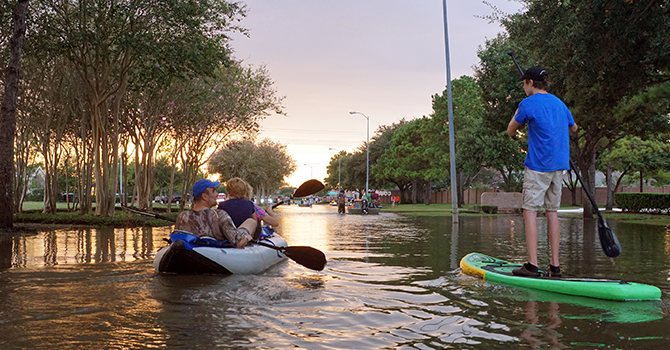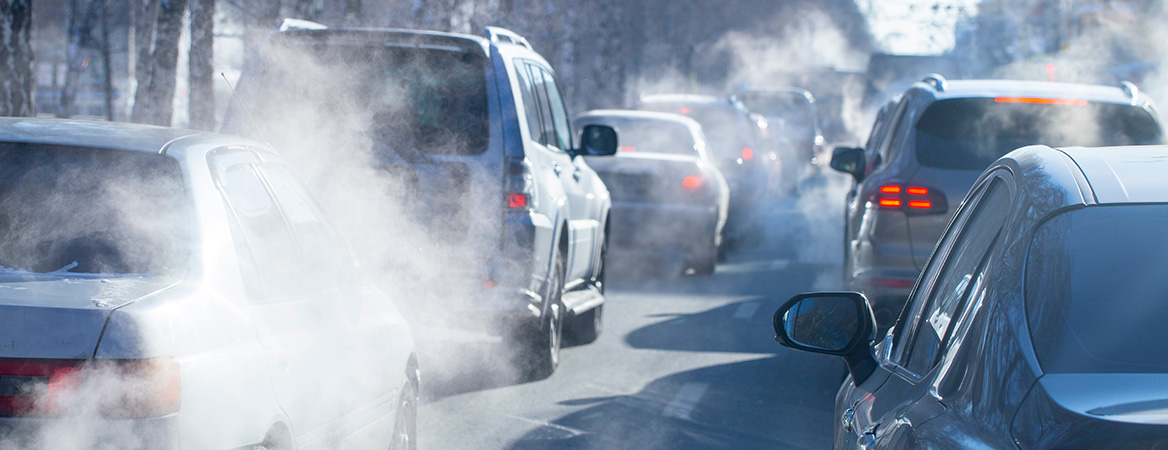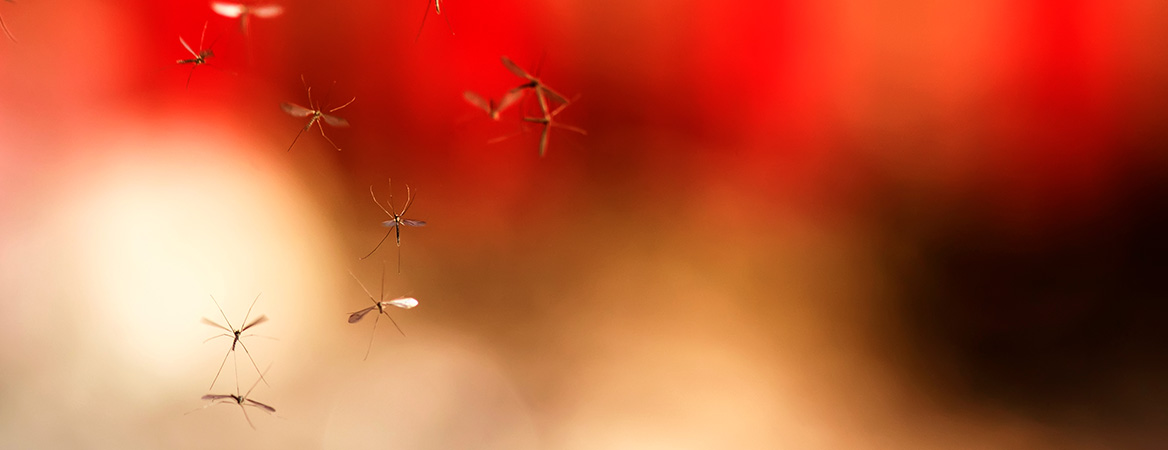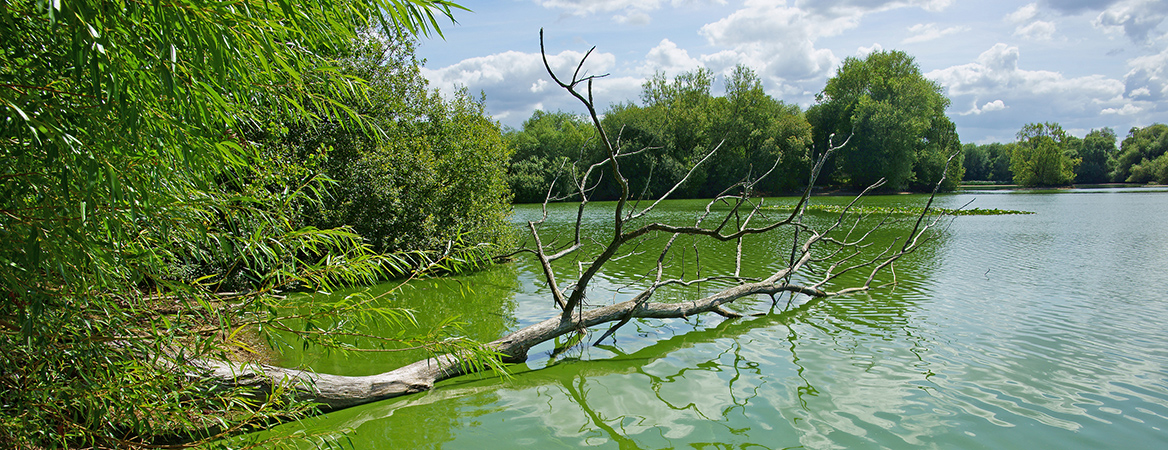Disease in the Era of Climate Change: Human Disease Burdens in a Dynamic World

Introduced by John Meeker
Senior Associate Dean for Research, Professor of Environmental Health Sciences and Global Public Health
Topics
How will human health adapt to a rapidly changing world and to rapidly evolving disease burdens?
We are inundated nearly every day with reports and images of melting glaciers, intense heatwaves, extended droughts, uncontrollable wildfires, severe hurricanes, historic flooding events, and other phenomena in the natural world showing us that global climate change is indeed upon us.
The impacts of climate change will undoubtedly reach far and touch every aspect of our lives and the world around us in many ways. From rising global temperatures and sea levels to increased frequency and severity of extreme weather patterns and natural disasters, it is clear that climate change will remain one of the greatest challenges facing humanity for generations to come. And these impacts will not affect individuals and populations in the same way. Climate change threatens to further widen existing gaps in health equity.
Our responses and adaptations to climate change must also reach far and touch multiple aspects of human life, including our human scientific pursuits. At Michigan Public Health, we are working diligently toward anticipating and mitigating the consequences climate change will have on human health and disease. We do so with our leading research, by engaging with governments, NGOs, and communities to provide them with the best and most current science, and by training the next generation of public health professionals and researchers to be prepared for all current and emerging public health issues.
In the field of public health alone, climate change will impact every area of this broad, diverse discipline. In this issue of Findings, we offer a glimpse into how a changing climate has our faculty thinking about downstream effects on health and disease and how we will go about addressing them.
—John Meeker

Evolving by Natural Selection and Plasticity
–Rachel Morgan, PhD Student in Environmental Health Sciences, and Dana Dolinoy, NSF International Chair and Professor of Environmental Health Sciences, Professor of Nutritional Sciences
The genetic material of every organism exists within the regulatory networks that govern gene expression, collectively called the epigenome. Epigenetics has taken center stage in the study of diseases such as cancer, but its integration into the field of climate change is emerging. Much discussion of climate change in the field of epigenetics focuses on plasticity—how changes in plant or animal epigenomes allow them to respond to environmental stressors in more efficient ways than natural selection. Researchers are investigating the possibility of transgenerational plasticity—whether plasticity acquired in one generation can be passed down to the next. If environmental changes shift our diets, human nutrition will also become a focus of climate change plasticity research, including whether adaptations impact the epigenomes of entire populations, most notably those likely to experience food shortages—developing nations and disadvantaged communities. Temperature is currently the field’s main focus. For aquatic life, rising water temperatures mean less available dissolved oxygen, and several fish species have already experienced epigenomic shifts. Increasing temperatures are an important factor on land too, where a range of organisms are responding with alterations in their epigenome. This is especially true for plant species, which cannot adapt to environmental stress by changing migration patterns or behaviors. Changes in temperature and rainfall also affect air composition and distribution, altering how human populations are exposed to airborne toxicants known to or suspected of altering epigenomes. Repercussions of these changes will affect food systems as the size and population of fish decrease and as crop location and viability evolves.

Sustainable Foods and Sustainable Diets
–Katerina Stylianou, Postdoctoral Research Fellow in Environmental Health Sciences, and Olivier Jolliet, Professor of Environmental Health Sciences
Can we achieve sustainable diets without imposing unrealistic drastic dietary changes, like everyone becoming vegan? Sustainable foods are gaining popularity among consumers, but we lack tools to combine the environmental and nutritional health effects of food in a consistent way. Without such tools, we cannot give consumers a general sense of which foods to prioritize that are good both for them and the environment. We are developing food-level and eventually diet-level summaries of nutrition health burdens in minutes of healthy life lost/gained and in life-cycle environmental impacts of foods. Environmental impacts include indicators for climate change from greenhouse gas emissions to air pollution and land occupation. Food-level summaries show substantial variations, suggesting trade-offs between human and environmental health. Generic or oversimplified recommendations—for example, all plant-based foods are better than all animal-based foods—can be misleading. Our work demonstrates that small but targeted substitutions of foods high in processed and red meat for a mix of vegetables, fruits, nuts, legumes, and selected seafood can yield substantial health benefits and reduce diet-related impacts on climate change by more than a third.

Heat, Air Quality, and Resource Equity
—Marie S. O’Neill, Professor of Environmental Health Sciences and Epidemiology, and Carina Gronlund, Research Assistant Professor, Institute for Social Research
A prevailing result of climate change is an increase in extreme-heat events, which have significant effects on air quality. Extreme heat is an environmental exposure that can cause dehydration, heat exhaustion and stroke, cramps and rashes, dizziness, and many other primary symptoms that in turn can exacerbate cardiovascular and kidney problems, dementia, and even death—especially for those with preexisting conditions. Pollen counts and certain types of air pollution may also increase with climate change, especially with longer periods of warmer temperatures. Extreme heat has striking disparities in health effects, with many studies finding differing associations by race and socioeconomic status. Housing may be an important mediator of those disparities, and simple interventions like providing access to energy-efficient and affordable cool spaces may reduce the risk of every negative outcome mentioned above. Interventions like these may also have multiple co-benefits: reducing energy injustices across the grid, reducing greenhouse gas emissions, and improving adaptation to future climate-related problems. When we understand the relative burdens of climate-related events, we can make better decisions about funding allocations that protect people from the impacts of these events. If research tells us the biggest impacts on human health in a city are from extreme heat or increased precipitation or poor air quality, our policymakers can be informed about which additional resources are needed to mitigate the effects of those particular realities. Our communities have real spending decisions to make and real benefits to gain for the entire population in preparing for the impacts of climate change.

Harms to Community and Individual Mental Health
—Alison Miller, Associate Professor of Health Behavior and Health Education
Stable economic, political, and social contexts and connection with cultural traditions and social supports are critically important for mental health. When physical environments are altered by climate-related events, they can become inhospitable and sometimes uninhabitable, creating circumstances that disrupt the lives of communities and the individuals living in these communities. Numerous ripple effects—including anxiety and stress, job insecurity, loss of cultural traditions, family separations, and disruptions in food and health care systems—can each negatively impact mental health. Furthermore, chronic stress exposure can also have intergenerational impacts. For example, maternal prenatal stress can negatively affect fetal development; climate-related exposures to toxicants, poor nutrition, disease, poor air quality, and limited health care can directly shape child development; and adverse childhood experiences are linked to numerous long-term negative health and mental health outcomes. The negative effects of climate change on mental health may be felt first in communities with limited resources to address these effects. Interventions, particularly in regions most severely affected by climate change, will need to be coordinated across systems to address the many complex ways climate change will affect mental health.

Climate Change and Infectious Disease
–Joseph N.S. Eisenberg, Chair and Professor of Epidemiology, Professor of Global Public Health
Vectorborne disease patterns are strongly influenced by climate and climate change. As mean temperatures rise, we see increased geographic spread of mosquito vectors and their pathogens. For example, dengue fever, generally thought of as a “tropical disease” found in countries along the equator, is now transmitted even in the US South. Temperature is a big factor in whether transmission is possible because the mosquito itself—its mortality and fertility—is highly sensitive to temperature. The viruses mosquitoes carry are also sensitive to temperature variations. An increase in temperature will decrease the time from when a virus infects a mosquito to when the mosquito becomes infectious to humans. For this reason, temperate areas that are slowly becoming tropical or subtropical are likely to have increases in mosquito-borne disease. Water-borne diseases are also influenced by climate change, especially by extreme weather events— droughts concentrate pathogens, while floods mobilize pathogens resulting in contaminated water sources. Zoonosis, where a host-pathogen relationship spills over to humans—for example, a reservoir animal like a bat spreading Ebola virus to humans—is more complicated regarding climate change. As locations on the planet become less habitable for humans, we may find ourselves in contact more often with zoonotic pathogens. As biodiversity decreases, we may see increases in certain vectorborne diseases, such as Lyme disease transmitted by ticks, if certain predators along a food chain are reduced or removed and the prevalence of efficient hosts below them on the chain—such as deer and mice—increases.

The Politics of Response and Resilience
–Scott L. Greer, Professor of Health Management and Policy, Global Public Health, and Political Science
Local governments play a significant role in how communities around the world will—or will not—develop resilience to climate change. And policy is a central place for governments to influence our social transition to that resilience. Policy can encourage building infrastructures that withstand storm swells and flooding. Policy can protect and support agricultural systems and food supplies affected by extreme weather events and temperature variations. Policy at all levels can also affect a region’s ability to respond effectively to disasters, most importantly the ability to protect the most vulnerable communities in the affected regions. A recent study we conducted compared federal responses to Hurricanes Harvey and Irma in Texas and Florida to federal responses to Hurricane Maria in Puerto Rico. The variation in the responses was not commensurate with storm severity and public need after landfall in the case of Puerto Rico compared with Texas and Florida. If we assume that disaster response should be at least commensurate with storm severity and population need, the insufficient response received by Puerto Rico raises concern for growth in health disparities and increases in adverse health outcomes. We know that negative environmental impacts of any kind—climate change included—have greater impacts on vulnerable communities. Society’s responses through public health systems, infrastructure improvements, and policymaking should not exacerbate health inequities. Rather, financial and other resources should be allocated to promote the health of the entire population, beginning with the most vulnerable.

Waterborne Disease and Human Health
—Marisa Eisenberg, Associate Professor of Epidemiology, Complex Systems, and Mathematics
Extreme weather, warming water sources, and flooding can alter the suitability of the local environment for transmission of waterborne disease by changing water availability, temperatures, flow, and so on. Climate change-related events like extreme weather and other natural disasters disrupt human populations and the environment in ways that can lead to increases in waterborne disease incidence. Less directly but still of great importance are how a range of broader factors are likely to affect waterborne disease patterns. This includes how economic impacts of climate change affect individual access to clean water and availability of infrastructure for clean water and effective sanitation. Refugee camps and other high-stress, high-density populations are likely to be particularly impacted, making vaccination along with water, sanitation, and hygiene interventions important to protecting against outbreaks of waterborne diseases like cholera. We use simulation models to test intervention strategies that consider climate-related factors like extreme weather events, flooding, and population movement. As epidemiologists, mathematical modelers, and others in public health work to understand and predict the effects of climate change, we must also translate this understanding to prevention efforts that build resilience and reduce impact when climate change-related events do happen. Waterborne disease prevention—via improvements in water quality and sanitation infrastructure—will continue to be critical to protecting human health, particularly in communities most vulnerable to climate change.

Weather, Inequality, and Infectious Disease Risk
—Jon Zelner, Assistant Professor of Epidemiology, Center for Social Epidemiology and Population Health
The combined social and environmental effects of global warming on infectious disease risk will be significant. Climate-induced migration and social instability will drive exposure to unimproved sewage, overcrowded conditions that facilitate transmission, and a host of social ills as well as mental health concerns. So indirectly, climate-induced migration will put people at risk of risks. Directly, transmission of diarrheal diseases will be impacted by sea-level rise, precipitation, and air temperature through urban flooding, pathogen viability, and related phenomena. Increases in humidity and air temperature affect transmission rates of tuberculosis, influenza, and other respiratory infections. More than ever, reductions in economic disparity, structural discrimination, and imbalanced political power will be critical to improving population health because they will help mitigate these increasing disease risks for entire populations—for those who can afford health care and those who cannot.
We cannot get away with addressing social and physical environments separately in understanding disease. We must deeply understand both and work toward interventions that can be effective and robust across an array of socially and environmentally complex settings.
- Interested in public health? Learn more today.
- Read more articles about environmental health.
- Support research at Michigan Public Health.
Tags
- Alumni
- Environmental Health Sciences
- Epidemiology
- Faculty
- Health Behavior and Health Equity
- Health Management and Policy
- Nutritional Sciences
- PhD
- Students
- Advocacy
- Air Quality
- Environmental Health
- Epidemiology
- Epigenetics
- Global Public Health
- Health Equity
- Infectious Disease
- Mental Health
- Pollution
- Social Epidemiology
- Toxicology
- Water Quality
